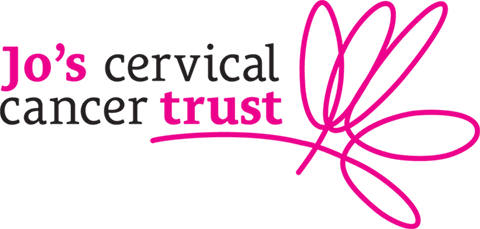There are no products in your shopping cart.
| 0 Items | £0.00 |
If you have questions or need to talk, call our helpline for information or support.
Have a question? Receive a confidential response via email.
Come to a support event to meet other people who have had a cervical cancer diagnosis.
Connect with others, share experiences and ask questions on our forum.
Individual support via phone or email, for anyone affected by a cervical cancer diagnosis.
Read about ways to cope with any effects of treatment and getting practical support.
The HPV vaccine (jab or jag) protects against some types of human papillomavirus (HPV) that can cause cancer and other conditions like genital warts. It is offered free in schools and is also available privately.
On this page:
HPV is a common virus that most people will have at some point in their life. There are over 200 types that can be split into low risk and high risk.
Low-risk HPV either causes no problems or conditions that are not serious, such as genital warts. High-risk HPV is linked to about 0.5 in 10 (5%) of all cancers, including almost all cervical cancers.
This may sound worrying, but it’s important to remember that 9 in 10 (90%) people will get rid of any type of HPV within 2 years.
There are 3 HPV vaccines used in the UK.
The HPV vaccine contains individual viral-like proteins that copy (imitate) different types of HPV.
These are not a live HPV virus, but still produce an immune response (antibodies) when injected into the body. This means that, if you were to get these types of HPV in future, these antibodies would bind to the virus and stop it infecting cells.
The HPV vaccine called Gardasil is used in schools. It protects against HPV types:
The HPV vaccine is effective at protecting against some types of HPV, reducing cervical cell changes (abnormal cells), and reducing some cancers including cervical cancer.
A study in Scotland found diagnoses of cervical cell changes decreased by 89% in people who have had the HPV vaccine. This includes the cell changes called CIN1, CIN2 and CIN3. This research looked at girls and women aged 15 to 26.
Another study in England found that, for women who had the vaccine in their teens, there were about 17,200 fewer diagnoses of high-grade cervical cell changes (CIN3) in their 20s.
Read more about cell changes >
We still need more, long-term research to fully understand the impact of the HPV vaccine on cervical cancer. However, a study in England has looked at the first HPV vaccine called Cervarix, which was used between 2008 and 2012. It protects against 2 types of HPV that, together, are thought to cause around 7 in 10 (70%) cervical cancers.
The study found that women who were vaccinated in their teens have had about 450 fewer diagnoses of cervical cancer. This means the incidence of cervical cancer has decreased by 87% in women in their 20s.
Read our blog about the HPV vaccine’s impact >
Research suggests that the HPV vaccine provides cross-protection against other types of HPV. Cross-protection means it protects against more HPV types than the ones included in the vaccine.
Research has proven that the HPV vaccine lasts for at least 11 years. We have only been able to measure this far because, in the UK, the HPV vaccine started to be offered in 2008. It is expected that the protection will last even longer and there is research happening to find this out.
That research will help us understand whether people need to have extra doses (boosters) of the HPV vaccine in future.
The HPV vaccine used in schools is called Gardasil. As well as individual proteins from HPV types 16, 18, 6 and 11, Gardasil also has small amounts of:
Gardasil and its ingredients have been tested and found to be safe.
Read more about HPV vaccine safety and side effects >
The HPV vaccine cannot get rid of HPV you already have. It is used to prevent HPV, which means it can stop you from getting certain types.
The HPV vaccine cannot cure or treat conditions caused by HPV, including:
You can get treatment for genital warts at a sexual health clinic. If you have cervical cell changes or cervical cancer, your healthcare team can explain any treatment you need.
The HPV vaccine does not protect you against all types of HPV, so cervical screening is still important even if you have had the vaccine. Going for cervical screening when invited can help find high-risk HPV or changes to cervical cells (abnormal cells) early, before they develop.
We know that HPV, and the HPV vaccine, can be confusing. If you have questions, we’re here to help answer them. Our trained Helpline volunteers can talk things through with you on 0808 802 8000.
You can also chat with others about the HPV vaccine on our Forum.
Thank you to all the experts who checked the accuracy of this information, and the volunteers who shared their personal experience to help us develop it.
We write our information based on literature searches and expert review. For more information about the references we used, please contact [email protected]
Understand what HPV is and how it is linked to cell changes and cervical cancer.

If you have questions, concerns or just need to talk, we are here for you. Call our free Helpline on 0808 802 8000 or email us.

